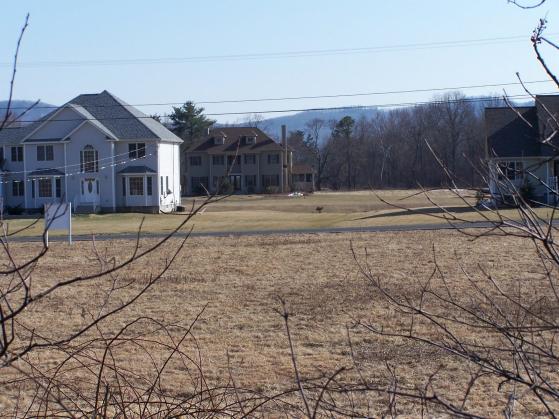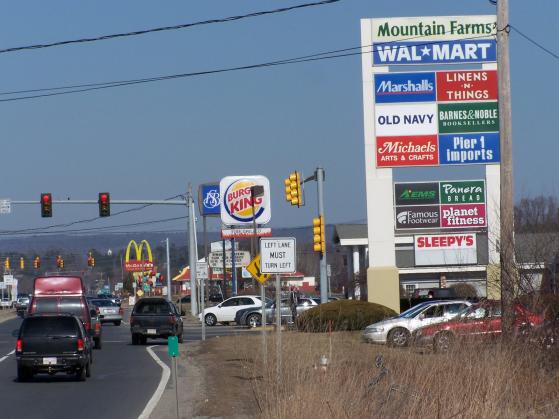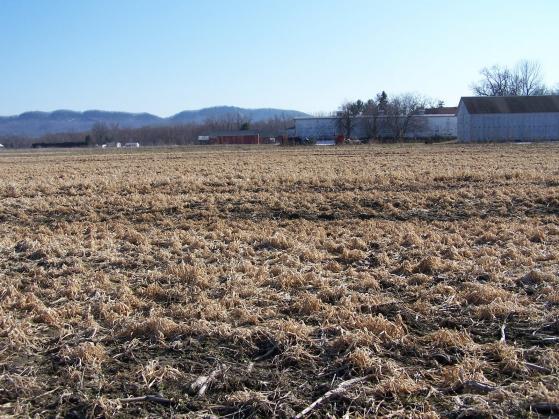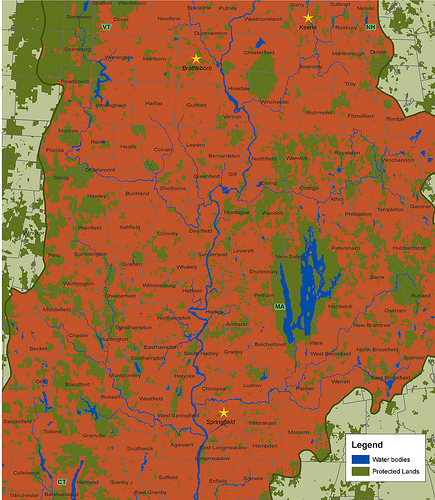These photos, taken March 17, show three ways that farmland has been used in Hadley, Mass. They show McMansions, the "Mountain Farms" strip mall, and an unprotected farm. Activists are proposing a fourth way for western New England: buy and bulldoze rundown single family houses near existing downtowns and replace them with energy efficient, multi-family housing, while permanently protecting farmland from development. Government policies can encourage stores to be built in and near downtowns so people can reach them on foot, or by bicycle or public transit, instead of by car.
photos by Eesha Williams
Residents of Hadley, Mass. who want to see their town’s farmland protected from development should call members of the selectboard by 6 p.m. today, or attend the board’s meeting tonight at 7 p.m. at Town Hall, said Chris Curtis, chief planner at the Pioneer Valley Planning Commission. Residents should ask their elected officials to support the Commission’s plan to save farmland in town.
Residents of the town of South Hadley have until March 24 to contact their selectboard members about the issue.
And anyone in Massachusetts can call Gov. Deval Patrick and ask him to direct his highway department to expedite a $1 million federal grant for Hadley farmland protection, Curtis said.
“This is a tremendous opportunity to protect some of the most beautiful farmland in the Pioneer Valley,” Curtis said.
If the money arrives – Curtis said he’s almost sure it eventually will – the Commission will ask farmland owners to sell the development rights. If the land owners would rather sell the land outright, that is also an option. In that case, the Commission may give preference to organic farmers when it leases or re-sells the protected land. “That hasn’t been decided yet,” he said.
The Commission is working with the Kestrel Trust and the Trustees of Reservations to protect Hadley farmland.
Smart growth development, as opposed to sprawl, is the construction of new homes and businesses close to one another, and close to train stations and bus routes. Curtis said a good example of a recently completed “smart growth” housing development near Hadley is Pioneer Valley Co-housing at 110 Pulpit Hill Rd. in Amherst.
Between 1982 and 2000, the Connecticut River valley lost 27 percent of its farmland, according to a report by the Trust for Public Land.
Groups like the Trustees of Reservations in Massachusetts, the Society for the Protection of New Hampshire Forests, and the Vermont Land Trust have protected significant swaths of farm and forest land, but they have not kept pace with the developers.
-----------
Map by the Trust for Public Land, 2006. This map shows the Pioneer Valley section of the Connecticut River watershed. Land outside the watershed is light green, meaning streams in that area do not flow to the Connecticut River. Dark green land has been protected from development. Red land is vulnerable to being paved with McMansions, Wal-Marts, parking lots, roads, and ChemLawns. Click on the map to enlarge.




Post new comment